Habit OPCO’s Challenge
Habit OPCO spent years building a regional network of opiate addiction treatment centers in the Northeastern U.S. By 2011, they had become one of the largest networks in the country, with 22 clinics. This was a significant accomplishment in light of the regulatory hurdles and NIMBYism they faced every step of the way.
In 2012, large national health care organizations began taking an interest in Habit, and the Board focused the executive team on a new mission: quickly grow patient volume within the existing network of clinics to boost Habit’s valuation. Habit’s executive team understood that they were losing the online game, an aspect of their marketing mix they hadn’t yet really focused on, and realized this was accordingly their greatest potential source of rapid growth. In early 2013, Habit turned to us to build and roll out an online lead generation campaign to help fill this void and achieve the Board’s growth objective.
Our Solution
PHASE 1: Strategy
Market Strategy
Seems straightforward, right? Be a resource to opiate addicts. But not quite. As we dug into the strategy process, it was evident there were distinctly different audiences, at very different stages, with very different needs. For example:
- First time opiate addicts – many people inadvertently become addicted to prescription painkillers following injuries, and search online for basic information to determine whether they are addicted, and/or how to handle withdrawal symptoms.
- This group is further segmented into those addicts who have continued abusing painkillers, vs. those who have been cut off by prescribing physicians, and moved onto heroin because of its significantly less expensive street value vis-à-vis street painkillers
- “Relapsed addicts” who have already received treatment previously – this group knows the drill, and are usually searching online simply for the nearest treatment center, often with a specific mode of treatment in mind
- Referral sources – physicians, law enforcement, and various agencies often search online for treatment options to help those in their care
- Friends and family of addicts – they want to help the addict, and are looking to educate themselves on opiate addiction and available treatment options.
A comprehensive online lead generation campaign would have to effectively focus on each of these distinct groups.
Keyword Strategy
Using our audience segmentation analysis, we developed detailed profiles of each target group, developing hypotheses via qualitative research about not only what they look for online, but what specific language they might use in search engine queries. Then we tested and refined these hypotheses through quantitative keyword analysis, using Google’s Keyword Planner and other quant tools.
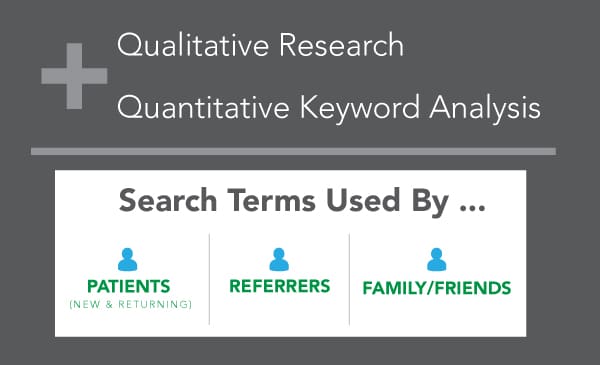
PHASE 2: Drive Prospective Patients and Referrers to Habit’s website
Search Engine Optimization
With Habit’s keywords established, we developed a unique, customized keyword implementation strategy for each of the 42 website pages we redesigned, integrating targeted keywords into page titles, URL’s, H1 header tags, meta descriptions, body copy, and navigation titles:
We also created five new pages that were critical to boost rankings for highly relevant, high-volume keywords that speak to important audience segments. For example, we found that first-time addicts often perform searches that incorporate the phrase “opiate withdrawal”, because they are investigating whether the physical symptoms they are experiencing are indeed withdrawal, or looking for ways to alleviate their withdrawal symptoms – so we created an “Opiate Withdrawal Treatment” page fully optimized to rank highly for that phrase. In the case of relapsed addicts, who tend to search more directly for treatment options, often even very specific modes of treatment, we built four pages for their most frequently searched phrases, including:
- Heroin Addiction Treatment
- Painkiller Addiction Treatment
- Methadone Program
- Suboxone Program
We wrote page titles and meta descriptions for all site pages and blogs that functioned as mini-ads for Habit within search engine results page, effectively enticing prospects to click into Habit’s site with copy that directly addresses their search query. For specific clinic location pages, we claimed and optimized the Google Places pages, and included the direct phone number of specific treatment centers to encourage direct leads before the prospective patient even visits the Habit site (and before they scan further down in Google rankings for competitor listings!):
Content Marketing
We developed a comprehensive content marketing plan, specifying blog topics that speak to each of Habit’s key audiences. We optimized the titles, content, and code of all blog posts to boost their rankings in search engines when Habit’s audiences search for information related to the blog topics:
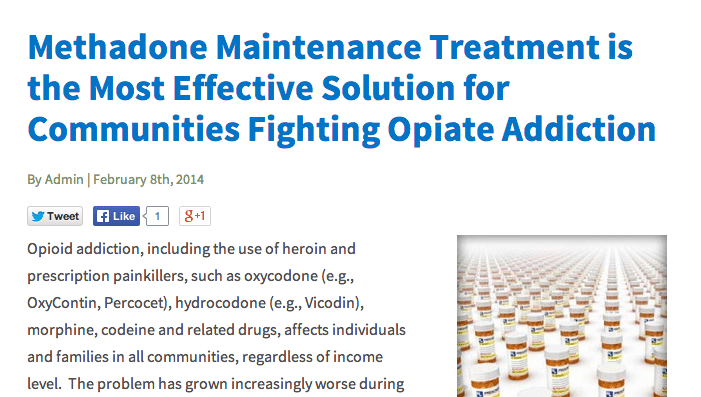
One particularly powerful piece of our content marketing plan was a branded series called “Patient Success Story”, involving actual Habit patients telling their authentic treatment and recovery stories. This type of content goes a long way toward building trust and credibility:
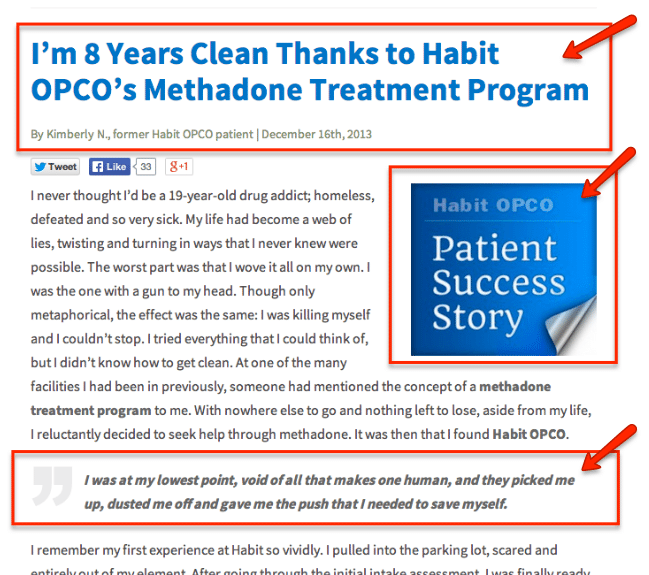
Email Marketing
Utilizing the blog content strategy we developed as a centerpiece, we developed an email marketing strategy specifically focused on patient referrers and influencers. The goal was to keep Habit front of mind with key patient referral sources, and to reinforce Habit’s positioning as a trusted thought-leader in opiate addiction treatment, by providing a steady stream of quality, helpful blog content delivered via email:
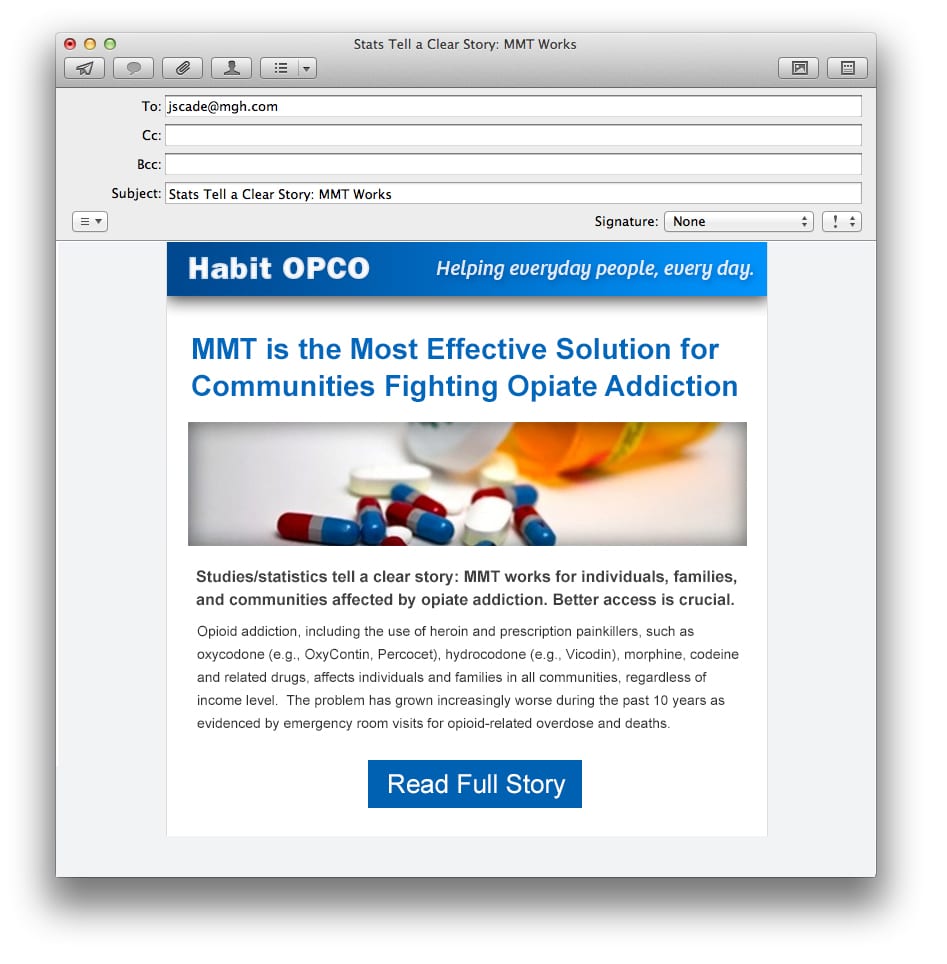
Social Media Marketing
We developed a LinkedIn presence specifically geared towards Habit’s primary patient referral source, the professional treatment community, and populated the site with a description of Habit’s services, Habit’s blog content, and curated industry content:
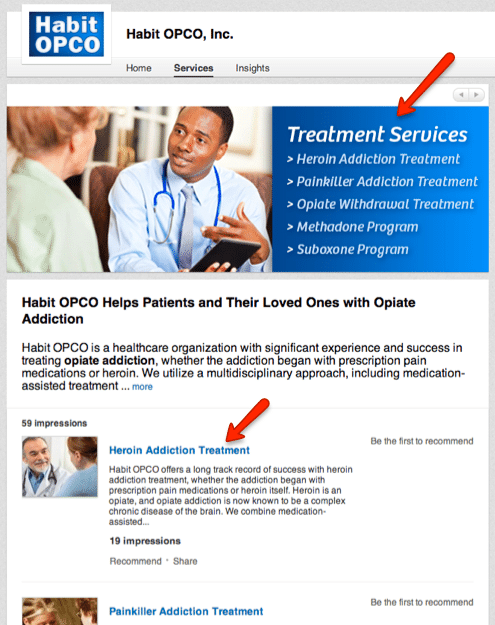
We also developed a Facebook presence primarily geared towards prospective patients and families/friends of addicts. Promoting Habit’s blogs on the Facebook page, in particular the Patient Success Story blogs, served as a powerful driver of traffic to Habit’s blog (which resides within Habit’s website!):
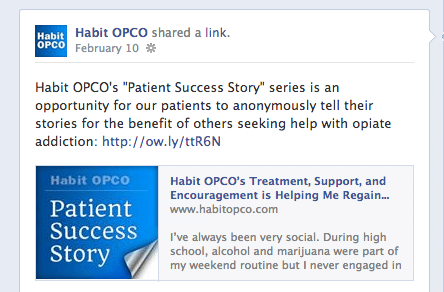
PHASE 3: Convert Website Visitors into Patient Leads
Improve Site Design and Functionality to Enhance User Experience
In our website redesign process, we implemented a wide range of features to drive user engagement. For example:
- Added brief, prominent communication element to feature area to ground visitors immediately on who Habit is, what Habit does, and how to contact them immediately.
- Built “Find a Clinic” tool to make the user experience easier and faster for opiate addicts and referrers who are searching specifically for a local treatment center.
- Added prominent Calls-to-Action on every page, highlighting three methods for contacting Habit in the manner most comfortable for the site visitor.
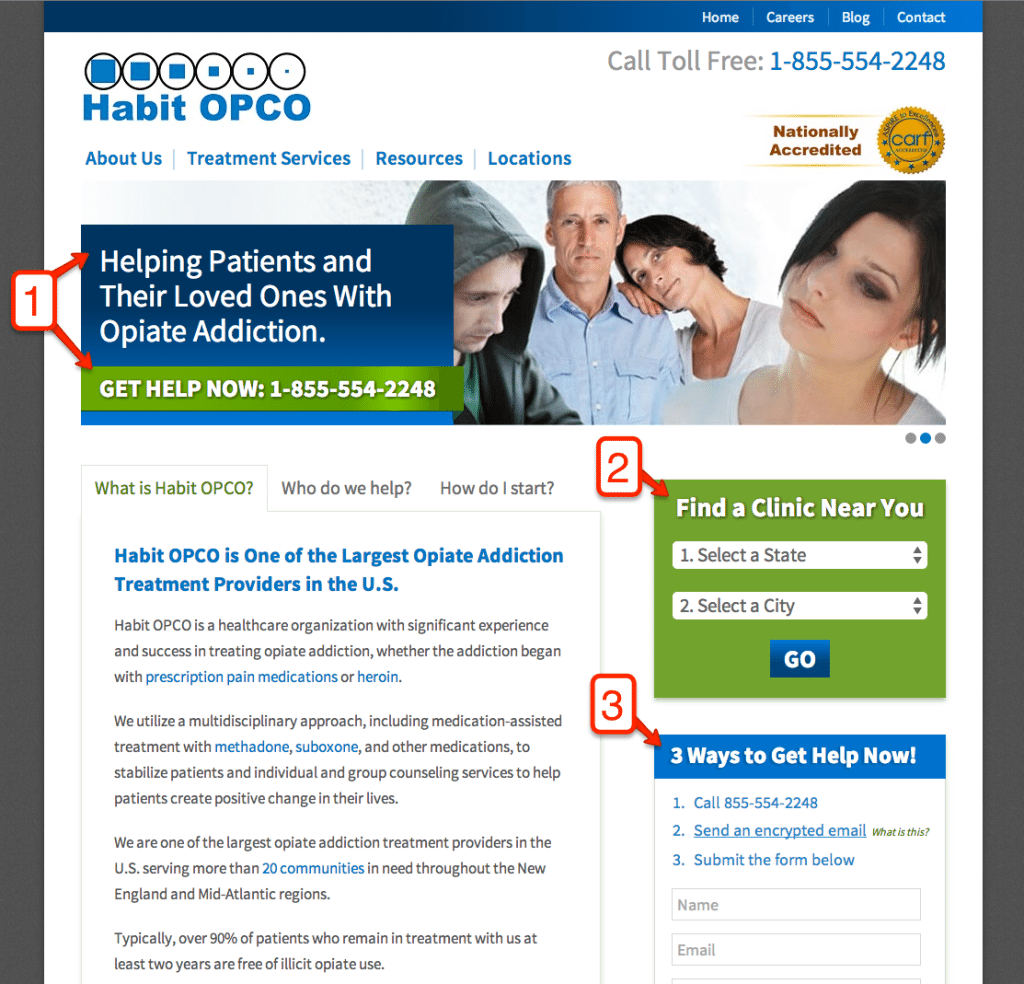
Customize the Mobile User Experience Through Implementation of Responsive Design
We installed Google Analytics on Habit’s site as soon as we began our engagement, and in short order discovered that more than a third of traffic to Habit’s site was coming via mobile devices. Given Habit’s website had been built for desktop users only, and the mobile experience was frustrating and cumbersome, this was identified as a significant user experience problem. So in the redesign process we rebuilt Habit’s site to optimize mobile users’ experience, automatically adjusting screen size, reorganizing navigation and layout, and prioritizing information to offer a distinct, customized, highly intuitive experience across mobile, desktop, and tablet formats:
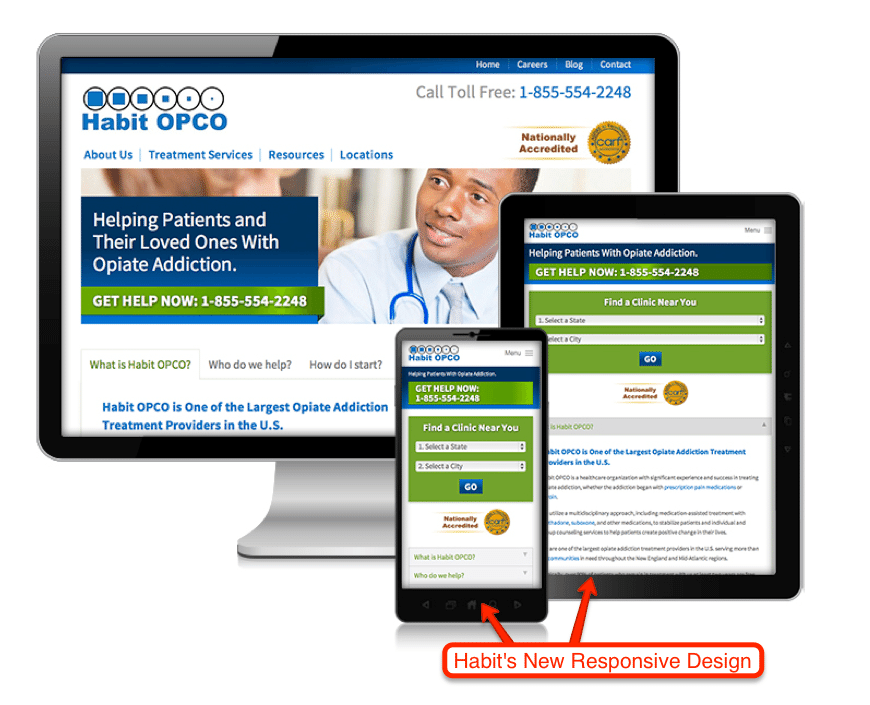
Build-out of Habit’s blog
When Habit engaged us, they didn’t have a blog presence at all. We designed and built an integrated blog onto their site to house the content marketing strategy we were executing.
The blog incorporates the call-to-action sidebar element we created for the website, as well as other engagement elements such as social sharing, email subscription, and commenting:
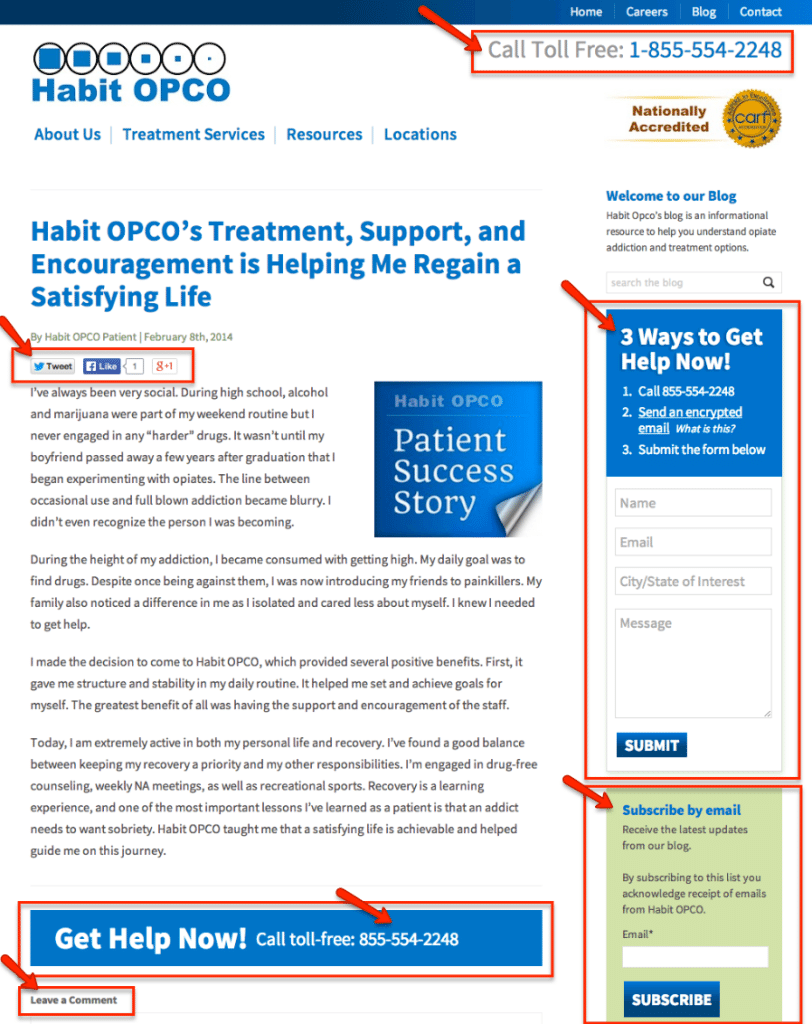
We also promoted the blog on Habit’s home page to encourage deeper user engagement:

The importance of the blog, and our content marketing strategy, is twofold:
- Drive greater site visitor volume via the powerful SEO benefit of content marketing
- Create a richer, more substantial experience for site visitors to help convert them into new patients and referrers
THE RESULTS
- >400% increase in non-branded unique monthly website visitors (NOT including online searches for Habit OPCO by name)…so this is a pure increase in high quality earned visitors
- Equates to >1,000 new site visitors/month
- 45% increase in average time spent by visitors on site
- This means Habit is now not only getting more site visitors, but equally importantly attracting the right visitors who have found what they were searching for, are investing time learning about Habit, and are much more likely to become patients or refer patients.
- Achieved rankings in Google and other search engines that for the first time not only eclipsed competitors, but even surpassed major resource sites for important keyword phrases as depicted in the following page 1 of Google search results:
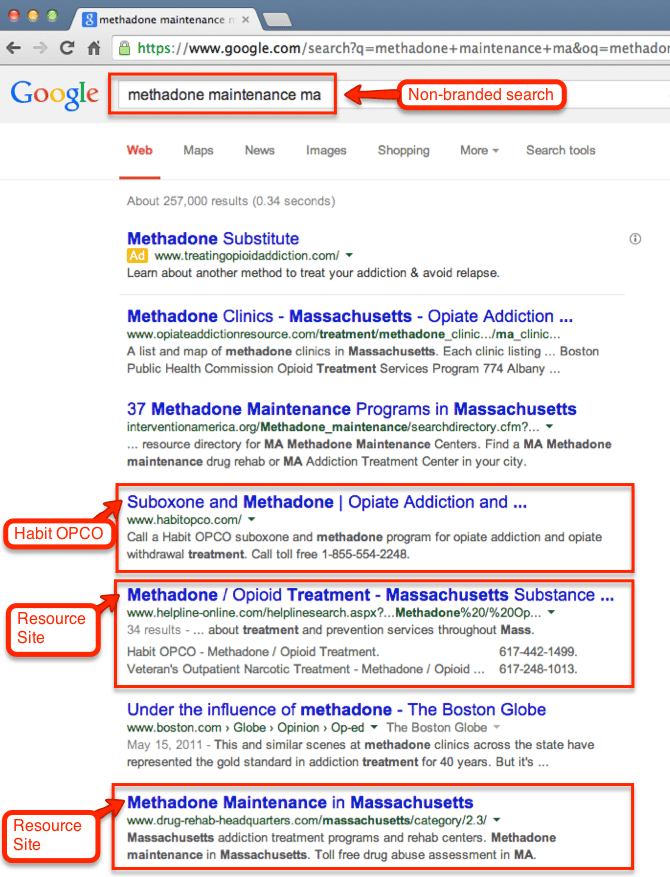
- Substantial uptick in monthly call volume, leads, and new patient volume reported by managers from almost all 22 treatment centers within months of campaign implementation
- $58M acquisition of Habit OPCO by private equity firm Bain Capital through CRC Health Corp. (a California based company Bain has owned since 2006), completed in December 2013 – a valuation exceeding expectations of the Habit board and executive team.
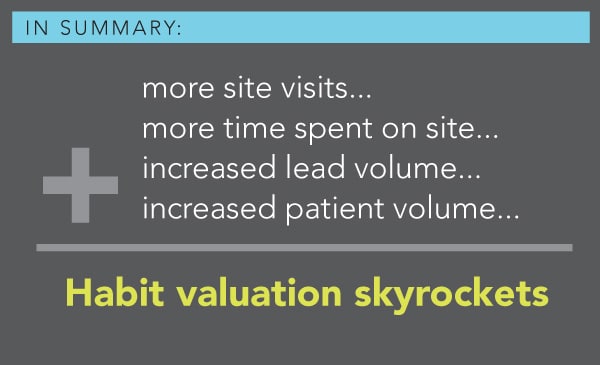


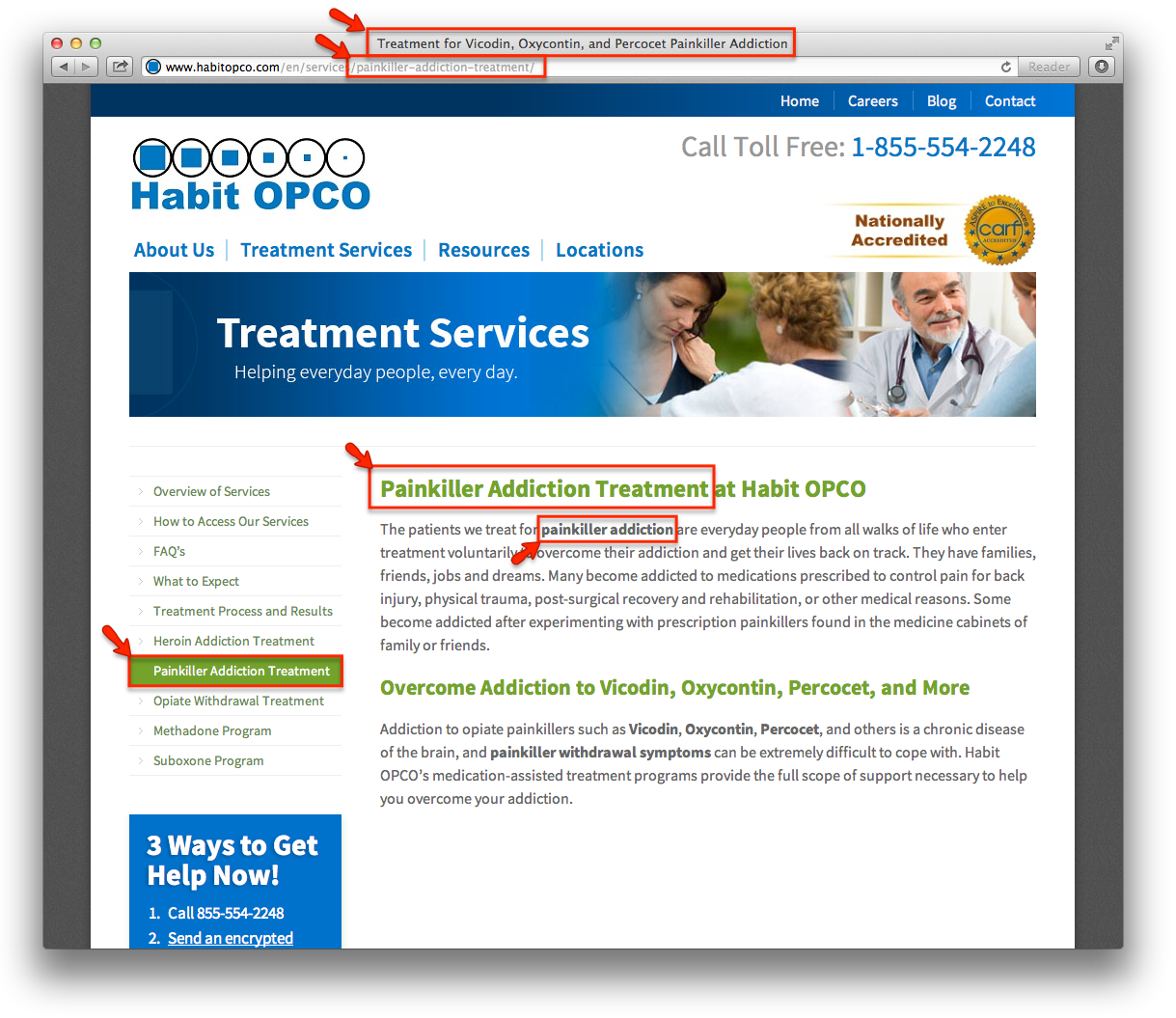
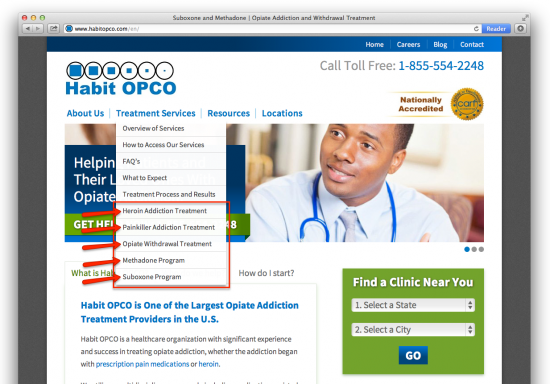
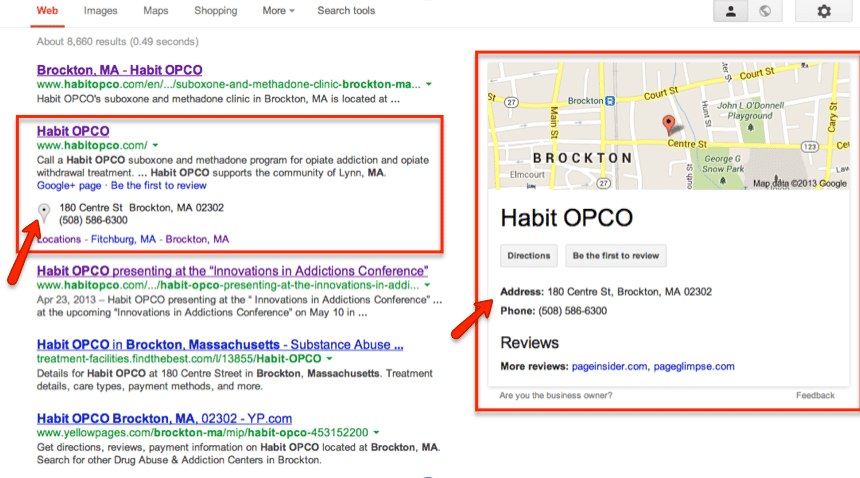
Leave a Reply